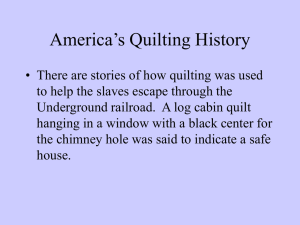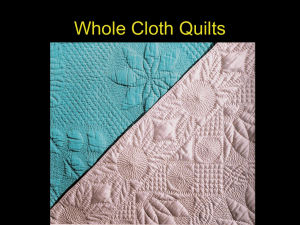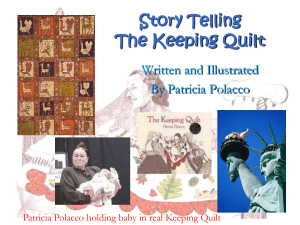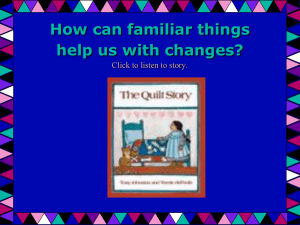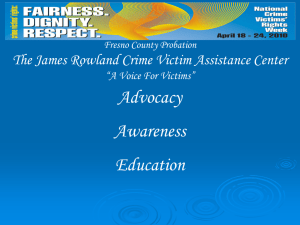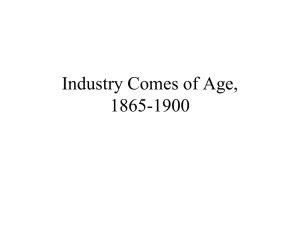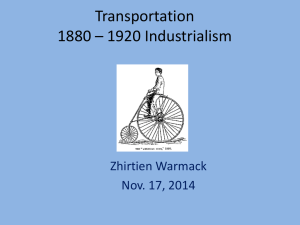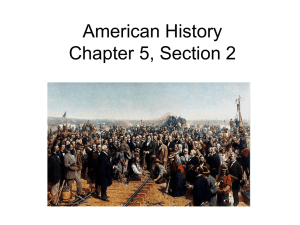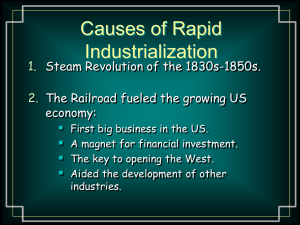Quilt Codes of the Underground Railroad
advertisement
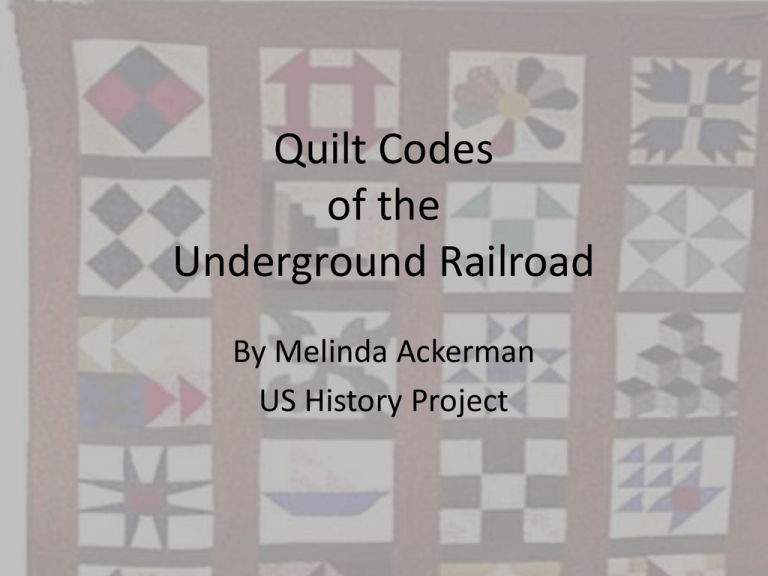
Quilt Codes of the Underground Railroad By Melinda Ackerman US History Project What is the Underground Railroad? • The name of the secret route slaves took to escape to the north • Harriet Tubman was the most well-known conductor • She was an escaped slave who helped over 300 slaves escape. • She made 19 trips • Estimates are that as many as 100,000 people escaped between the Revolutionary War and the Civil War. Code Quilts • People who worked and traveled on the Railroad used secret codes to learn the routes from one safe place to the next. • Quilt samplers were used to teach slaves the code. The Code • Monkey Wrench: • Wagon Wheel: • The Bear’s Paw: • The Crossroads: • Log Cabin: • Shoofly: • Bow Ties: • Flying Geese: • Drunkard’s Path: • North Star: How the Code Worked • Researchers recently learned that an Underground Railroad Quilt Code • Once stitched, the coded quilts were “aired” out the windows of slave cabins The Monkey Wrench Quilt • The Monkey Wrench quilt was the first quilt displayed. The Wagon Wheel Quilt • The Wagon Wheel was the second quilt to be displayed on the fence. The Bear’s Paw Quilt • The Bear’s Paw quilt was the third quilt used to help prepare slaves for their journey to freedom. The Crossroads Quilt • The crossroads quilt was the fourth quilt with symbolic meaning revealed to slaves planning to escape. The Log Cabin Quilt • The log cabin block is the fifth quilt in the secret code. The Shoofly Quilt • The shoofly represents an actual person who might have helped escaping slaves. His responsibility was to secretly aid and harbor fugitives. The Bow Tie Quilt • The Bow Tie quilt was the seventh quilt displayed on the fence to teach slaves how to escape to freedom. The Flying Geese Quilt • The Flying Geese quilt is the eighth quilt in the code. The Drunkard’s Path Quilt • The Drunkard’s Path quilt is the ninth patter of the secret code. The North Star Quilt • North Star Quilt is the tenth quilt in the secret code. IT IS ALL A LIE!! The Lie • at least 15 contradictory versions of the Code were circulating by 2005. • Some claim the Code as part of their family oral history, but none can point to an ancestor who used it to escape to the North or even participated in the Underground Railroad • Firsthand accounts of fugitive slaves and Underground Railroad participants detail many ways of conveying messages but never mention using quilts, • details of the Code are incompatible with documented evidence of the Underground Railroad, slave living conditions, quiltmaking, and African culture • the Code includes quilt patterns known to have originated in the 1930s • Some say certain patterns are derived from African symbols, the messages the Code assigns to them conflict with the meanings the symbols have in Africa • The earliest mention of a "quilt code" is a brief statement in a 1987 feminist video: ”quilts were hung outside Underground Railroad safe houses.” (No source is given for the assertion) • Sweet Clara and the Freedom Quilt, a children’s fiction book • Ozella Williams used her own version of a "quilt code" to sell quilts in a Charleston, South Carolina tourist mall. • Hidden In Plain View, was published after Williams's death, and was promoted by Oprah Winfrey • Used to make a profit • no historian has ever supported the Code • by 2001 elementary and secondary schools were teaching it as historical fact. • after scholars pointed out numerous discrepancies between the Code and documented Underground Railroad history, earlier supporters of the Code began distancing themselves from its claims. Conclusion • The Underground Railroad is a powerful element in our trouble American past with slavery. • Harriet Tubman and the many others who risked their lives so 100,000 or more slaves could live free in the North and Canada is vital to our history. • Unfortunately, the myth of the Quilt Code is persistent in our collective story telling and has become fact. • What we should be teaching adults and children is the truth, and specifically, that slaves didn't use quilt patterns - they used their own wits and bodies to fight their way to freedom • by dressing the story up all cute and pretty with quilt patterns and kindly folks who used them to guide runaways to freedom - then we don't have to talk about the realities of slavery, and of running away • No one needs myths as a substitute for history, nor as a way to explain the complications of history. There is plenty of the real stuff out there, waiting to be exposed and taught to everyone References Appalachian Mountains. Digital image. Explorations. N.p., 2013. Web. 16 Feb. 2013. http://tcdsbstaff.ednet.ns.ca/asaulnier/Atlantic%20Canada%20Studies%209/Explo rations%20Answers%20p%2025%2026.html. Burns, Eleanor, and Sue Bouchard. Underground Railroad Sampler. San Marcos, CA: Quilt in a Day, 2003. Print. Fellner, Leigh. "Quilt History." Quilt History. Hart Cottage Quilts, 2013. Web. 12 Feb. 2013. <http://www.ugrrquilt.hartcottagequilts.com/>. “Harriet Tubman and the Underground Railroad.” 2013. The History Channel website. Mar 12 2013, 12:27 http://www.history.comhttp://www.history.com/shows/america-the-story-ofus/videos/harriet-tubman-and-the-underground-railroad. Larson, Kate Clifford. "Re: Question??? Who Used & How Were Quilts Used?" Re: Question??? Who Used & How Were Quilts Used? N.p., 13 July 2004. Web. 25 Feb. 2013. <http://www.afrigeneas.com/forum-ugrr/index.cgi/md/read/id/278>. "Underground Railroad Quilt Guide." Really Good Stuff. Really Good Stuff, 2005. Web. 12 Feb. 2013. <http://page.reallygoodstuff.com/pdfs/154227.pdf>.
